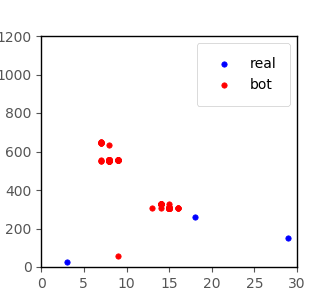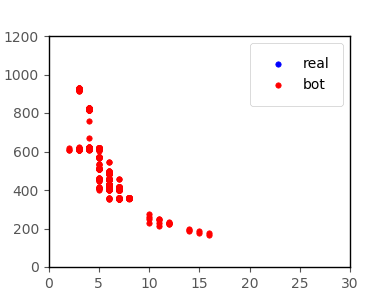The purpose of our project is to detect chatbots in chatrooms of livestreaming services. Most livestreaming platforms recommed stream(er)s to viewers based on engagement of streams (viewership and chatroom activity). Popular streams consistently attracting a large number of users to their streams have various ways to monetize their content and make a lot of money. To fast-track gain in popularity, some streamers use fraudulent methods such as inflating viewership (through viewbots) and increasing chatroom activity (through chatbots). We aim to detect streams which are chatbotted and the constituent fake chatbot handles.
We formulate the problem in terms of two subproblems. In the first stage, we detect whether the stream is chatbotted or not. If a stream is flagged as chatbotted, we move on to the second stage and detect the constituent fake chatbot handles of the flagged stream.
- For Stage 1, we have used a supervised approach to predict whether the given stream is chatbotted or not. The training set consists of a combination of synthetically generated chatbotted streams and real streams (streams with no inflated activity) The classification module (a SVM classifier), trained using this approach, can then be used to detect if a given (real world) stream shows signs of inflated activity (or not).
- For Stage 2, we utilize a semi-supervised approach - Label Propagation - we have an initial set of seed labels for a flagged stream (obtained using XMeans clustering), which we utilize, together with information from various modalities, to propagate and assign labels to the unknown datapoints. Each user in a flagged stream from stage 1 is assigned a label - real/bot. A supervised approach is not advisable for stage 2 due to (i) infeasibility of having a labelled dataset, (ii) problems with regard to generalizability when supervised methods are used.
- By splitting the complex overall problem of detecting chatbots into two stages, we get the following benefits: (i) we can utilize a supervised approach for stage 1, as features exhibiting consistent patterns are much easier to find at the stream level, (ii) in terms of interpretability, we can make a set of assumptions about the data for stage 2 - if a stream is flagged as chatbotted, then with a high probability, we expect to find both real and bot user handles, which helps with setting clustering thresholds and looking at particular regions of the graph, (iii) in terms of scalability, we perform the more computationally intensive stage 2 only on streams flagged as chatbotted.
- The
Data Collectiondirectory containsscrape.jswhich scrapes the data from a list of Twitch streams provided as input. Requires tmi.js https://github.com/tmijs/tmi.js Returns chatlogs in the form of .txt files of the respective streams where each line is a JSON string containing: {"t": timestamp, "u": username, "e": emoteset, "m": messsage with special characters intact, "nm": message with special characters removed} To anonymize this, useanonymizer.py. This also adds labels (real/bot) to the above JSON string if they are available for the given chatlog. - Two sample anonymized files
sample_chatlog_chatbotted.txt(a chatbotted chatlog with both real and bot participants) andsample_chatlog_real.txt(a chatlog with only real participants) have been provided inSample Data Codecontains the code for Stage 1, Stage 2, and the Baseline. Please refer to thereadme.mdtherein for instructions on how to execute them.Misccontains miscellaneous code for - text based features (which were not used), other clustering methods, conversational graphs, creating a synthetic dataset by merging files, etc.
- Use
python>=2.7.13and perform apip install -r requirements.txtbefore starting out. - Please write to us for access to the complete dataset (or for implementation related queries) at shreya.jain@research.iiit.ac.in or dipankar.niranjan@research.iiit.ac.in.






